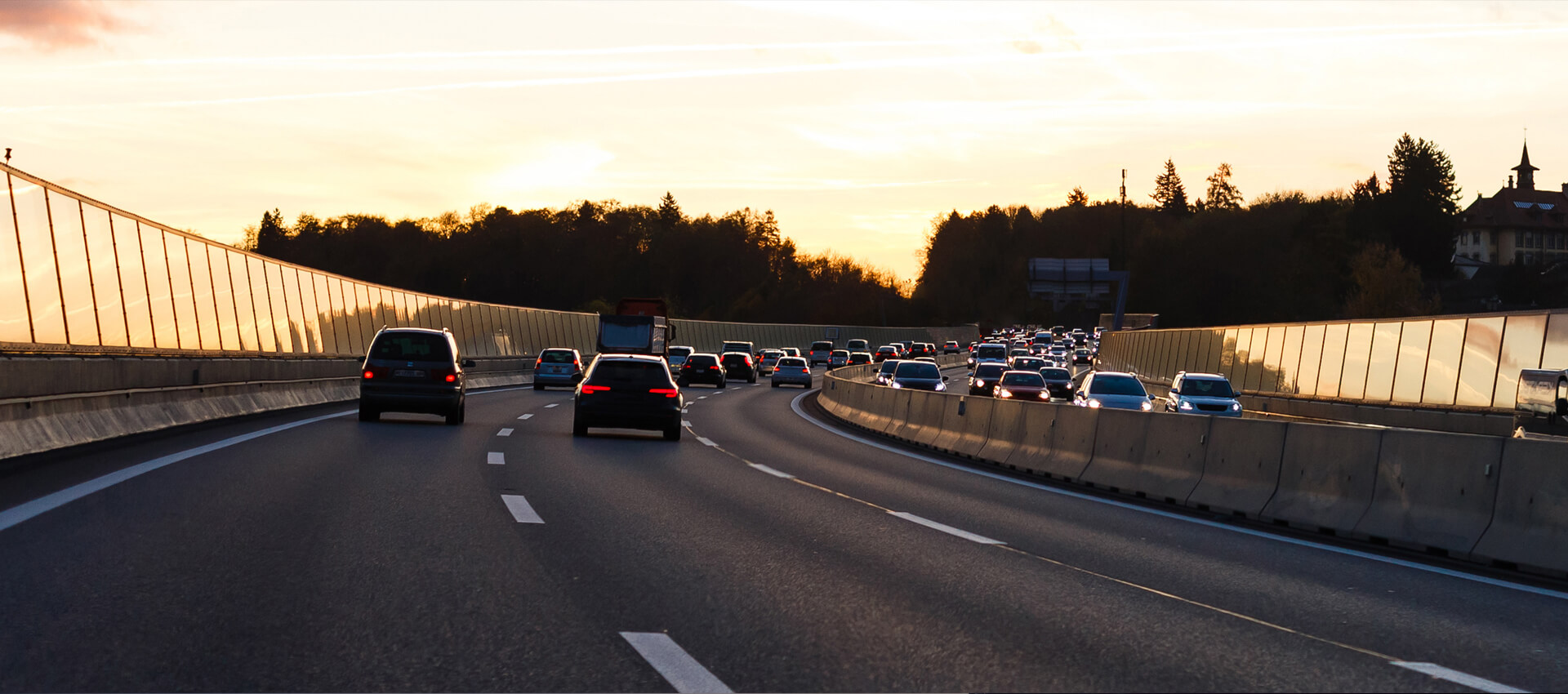If you’ve recently passed your driving test, it’s probable that you’ve already experienced motorway driving. However, you may still have many questions, so we’ve created a guide to driving on the motorway for new drivers here.
In order to drive on a UK motorway, you should hold a full driving licence for the specific class of vehicle you are driving. It’s extremely important that you know all the rules and have a full understanding of the road and traffic signs associated with the motorway system so you safely tackle motorway driving.
Motorway driving can be daunting for some people, especially if it’s your first time after you’ve just passed your driving test. To make life a little easier for you, we have written a range of detailed guides that should ease the stress of driving on the motorway. Just use the search function on our website and you’ll be taken to a full list of informative blogs.
It is especially important that you are fit to drive on the motorway. You must never drive if you are tired or ill, and there are many medicines and drugs that might make you sleepy, so read the instructions on the packet or speak to your pharmacist or doctor before driving.
There are many restrictions on the motorway, like no parking. So if you need to rest, you can pull up onto a service area, where you will no doubt find various facilities, such as restaurants, toilets, supplies, fuel, and sometimes hotels.
Note: It is an offence to park on the hard shoulder or an exit or slip road unless it is an emergency. Do not pull over to the hard shoulder for a ‘nap’. It won’t go unnoticed by the police who have cameras all along the motorways, and they will pay you a visit.
You must stop if overhead gantry signs show a red cross above every lane on the motorway. If any of the other lanes doesn’t show a red cross, you may move into that lane and continue if it’s safe to do so.
Long journeys can be monotonous and the situation can lead to you feeling sleepy. To prevent feeling drowsy, keep your car well ventilated, open a window, switch on the air conditioning, then find a service area and pull over; buy a coffee, wash your face, walk around a little, or simply take a short nap.
Safety checks to make before motorway driving
Your car may seem ok for normal day to day driving, but when you are travelling at high speeds or on long journeys, mechanical failure is more likely. So check out your car before your drive.
Follow these simple checks to make sure you and your vehicle stay safe whilst travelling on the motorway.
Tyres – these have got to be in good order, not damaged, and at the correct pressure – check your handbook for details of air pressure required, especially if the car is carrying a heavier than normal load, like several passengers plus their luggage.
Lights – make sure all your lights work, carry spare bulbs just in case you need to change one and make sure you have a screwdriver and read up beforehand on how to change a bulb! Don’t wait until it’s dark and wet when you need to change one. Practise in the daylight. When driving on a motorway at night or in poor weather conditions, it’s important to use your headlights, even if the road is well lit.
Windows and windscreen – always keep the window glass clean. The windscreen wash reservoir should be topped up, and the wipers should be working and in good order.
Instrument warning lights – check to see if there are warning lights showing. If there are engine warning lights showing on the dashboard you should not be driving your vehicle, let alone on a motorway.
Brakes – check your brakes are working correctly and can stop the car safely.
Steering – is the steering ok, does it seem in good order?
Fuel – never leave this to chance. Fill up the tank and take enough funds with you to get fuel for the return journey. Motorway petrol stations are notoriously expensive, so do this before you get on the motorway. Also, some motorways do not have services, and you might get stranded if you fail to fill up the car beforehand.
Oil – high speeds may mean your engine consumes more oil than normal and running out can be dangerous and of course, extremely expensive. Running an engine without oil leads to certain damage to the engine. Plus, you will be stranded.
Water – running the car at high speeds, or being caught in slow moving traffic jams can lead to a higher than normal water usage. Make sure all the fluids in your engine are at optimum levels.
Loads – if you are carrying a load, like suitcases, for example, it is vitally important to make certain the load is correctly secured. Whether it be a trailer or a roof rack, losing items on the motorway could cause death and destruction. If anything falls off the vehicle, never try to retrieve it yourself; call for assistance using the emergency phones.
Journey Plan – the modern way is to use a Sat Nav route finder. These are good tools but are not fool-proof. Take a good quality road map with you, and written directions to where you are going, particularly if you are taking a long journey, or an unusual destination. Getting lost on the motorway and trying to read your instructions while driving is not sensible and is considered dangerous, so study your route prior to setting off. Or, if you have a passenger, get them to help!
What are smart motorways?
According to Highways England, smart motorways were created to relieve congestion by making the hard shoulder available for use at very busy times.
Smart motorways also use variable speed limits to control traffic flow, but their ultimate aim is to manage traffic in a way that tries to reduce any environmental impact, in addition to all the costs associated with building extra lanes.
There are many pros and cons to smart motorways, but it seems they are here to stay so it’s best to understand them fully!
For instance, the hard shoulder can be removed and used as an extra lane; leaving people to wonder what happens if your vehicle breaks down. In an attempt to help the situation, Highways England are increasing emergency refuge areas (ERAs), but drivers should be extra vigilant when driving on a smart motorway as lanes could be closed or opened at any time.
New smart motorway driving law
The most recent new law to come into effect for smart motorways was in June 2019.
It applies to people who ignore the red X that appears on the gantry above lanes on a smart motorway. It’s always been against the law to use this lane, but authorities are taking a much tougher stance!
Motorists could land an instant fine of £100 and 3 penalty points for driving in a lane that’s been displayed with a red X.
Highways England issued more than 180,000 warning letters to drivers who’ve ignored the lane warnings since the beginning of 2017.
RAC spokesperson Simon Williams said:
“Our research found drivers understand very clearly what red Xs mean, yet worryingly far too many appear to have driven under one, dramatically putting themselves at risk of encountering a stationary vehicle or a worker in their path, and all the horrific consequences that could have.”
Cameras installed on the gantries will now be used to spot anyone driving in a lane with a red X and issue the fines and penalty points; so be aware!
How to deal with road works on the motorway
Everything that happens on the motorway is big and fast. And when maintenance or improvement works are required, it can be a big inconvenience to all road users.
If you know of some road works that can delay your journey, allow plenty of time, and make sure you are not going to run out of fuel.

Preparation is the key to motorway driving.
Road works have to be carefully planned and executed as the lives of the road users and the workmen are at risk. There are plenty of signs alerting drivers to the road works ahead; cones, lights, yellow signs with plans of any lane changes, speed restrictions or contraflows ahead.
Whatever the signs tell you to do, obey them. Make sure you know in advance what motorway signs actually mean. If you know of major road works on the motorway you are about to use, then allow more time, listen to the traffic reports, travel at another time or date, or take a different route; there is always something you can do to alleviate any problems due to the road works.
However, if you simply must go now, today, that route, then be patient.
Don’t take your frustration out on the road; stay calm and stay safe.
REMEMBER: On long journeys, make regular stops, especially at night.
We’ve also written blogs detailing how to safely leave the motorway and how to join the motorway so be sure to read these too!

